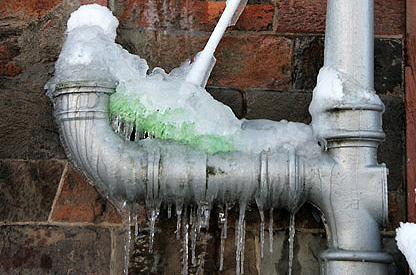Tips to Safeguard Your Pipes from Cold Weather: Professional Guidance
Tips to Safeguard Your Pipes from Cold Weather: Professional Guidance
Blog Article
The publisher is making a few good observations about How to Prevent Your Pipes From Freezing as a whole in this great article following next.

Cold weather can ruin your plumbing, particularly by freezing pipelines. Here's exactly how to prevent it from taking place and what to do if it does.
Introduction
As temperature levels decrease, the risk of frozen pipelines rises, potentially bring about pricey fixings and water damage. Recognizing exactly how to prevent icy pipes is essential for home owners in cold environments.
Prevention Tips
Shielding at risk pipes
Cover pipes in insulation sleeves or make use of heat tape to shield them from freezing temperature levels. Focus on pipes in unheated or external locations of the home.
Home heating strategies
Maintain interior rooms appropriately heated, specifically locations with plumbing. Open cabinet doors to allow cozy air to flow around pipes under sinks.
How to identify frozen pipelines
Try to find decreased water flow from taps, unusual odors or sounds from pipes, and noticeable frost on subjected pipes.
Long-Term Solutions
Structural adjustments
Think about rerouting pipes far from outside wall surfaces or unheated locations. Add additional insulation to attics, cellars, and crawl spaces.
Updating insulation
Invest in high-quality insulation for pipelines, attics, and wall surfaces. Appropriate insulation assists preserve regular temperatures and lowers the danger of frozen pipes.
Securing Exterior Plumbing
Yard hoses and exterior faucets
Detach and drain pipes yard hoses prior to winter months. Install frost-proof faucets or cover outside faucets with insulated caps.
Comprehending Frozen Pipelines
What triggers pipelines to ice up?
Pipes freeze when revealed to temperatures below 32 ° F (0 ° C) for expanded periods. As water inside the pipes freezes, it expands, taxing the pipe walls and possibly triggering them to burst.
Threats and problems
Frozen pipelines can cause water interruptions, building damages, and expensive fixings. Burst pipelines can flooding homes and cause substantial architectural damage.
Indications of Frozen Pipeline
Recognizing icy pipes early can stop them from rupturing.
What to Do If Your Pipelines Freeze
Immediate actions to take
If you believe frozen pipelines, keep taps open to ease pressure as the ice thaws. Make use of a hairdryer or towels taken in warm water to thaw pipes slowly.
Verdict
Avoiding icy pipelines needs aggressive actions and fast responses. By recognizing the reasons, indications, and preventive measures, home owners can protect their plumbing throughout winter.
5 Ways to Prevent Frozen Pipes
Drain Outdoor Faucets and Disconnect Hoses
First, close the shut-off valve that controls the flow of water in the pipe to your outdoor faucet. Then, head outside to disconnect and drain your hose and open the outdoor faucet to allow the water to completely drain out of the line. Turn off the faucet when done. Finally, head back to the shut-off valve and drain the remaining water inside the pipe into a bucket or container. Additionally, if you have a home irrigation system, you should consider hiring an expert to clear the system of water each year.
Insulate Pipes
One of the best and most cost-effective methods for preventing frozen water pipes is to wrap your pipes with insulation. This is especially important for areas in your home that aren’t exposed to heat, such as an attic. We suggest using foam sleeves, which can typically be found at your local hardware store.
Keep Heat Running at 65
Your pipes are located inside your walls, and the temperature there is much colder than the rest of the house. To prevent your pipes from freezing, The Insurance Information Institute suggests that you keep your home heated to at least 65 degrees, even when traveling. You may want to invest in smart devices that can keep an eye on the temperature in your home while you’re away.
Leave Water Dripping
Moving water — even a small trickle — can prevent ice from forming inside your pipes. When freezing temps are imminent, start a drip of water from all faucets that serve exposed pipes. Leaving a few faucets running will also help relieve pressure inside the pipes and help prevent a rupture if the water inside freezes.
Open Cupboard Doors
Warm your kitchen and bathroom pipes by opening cupboards and vanities. You should also leave your interior doors ajar to help warm air circulate evenly throughout your home.

Hopefully you enjoyed reading our excerpt about Preventing and dealing with frozen pipes. Many thanks for taking a few minutes to read our blog. Do you know about anybody else who is inquisitive about the subject? Feel free to promote it. Thank-you for taking the time to read it.
Call Today Report this page